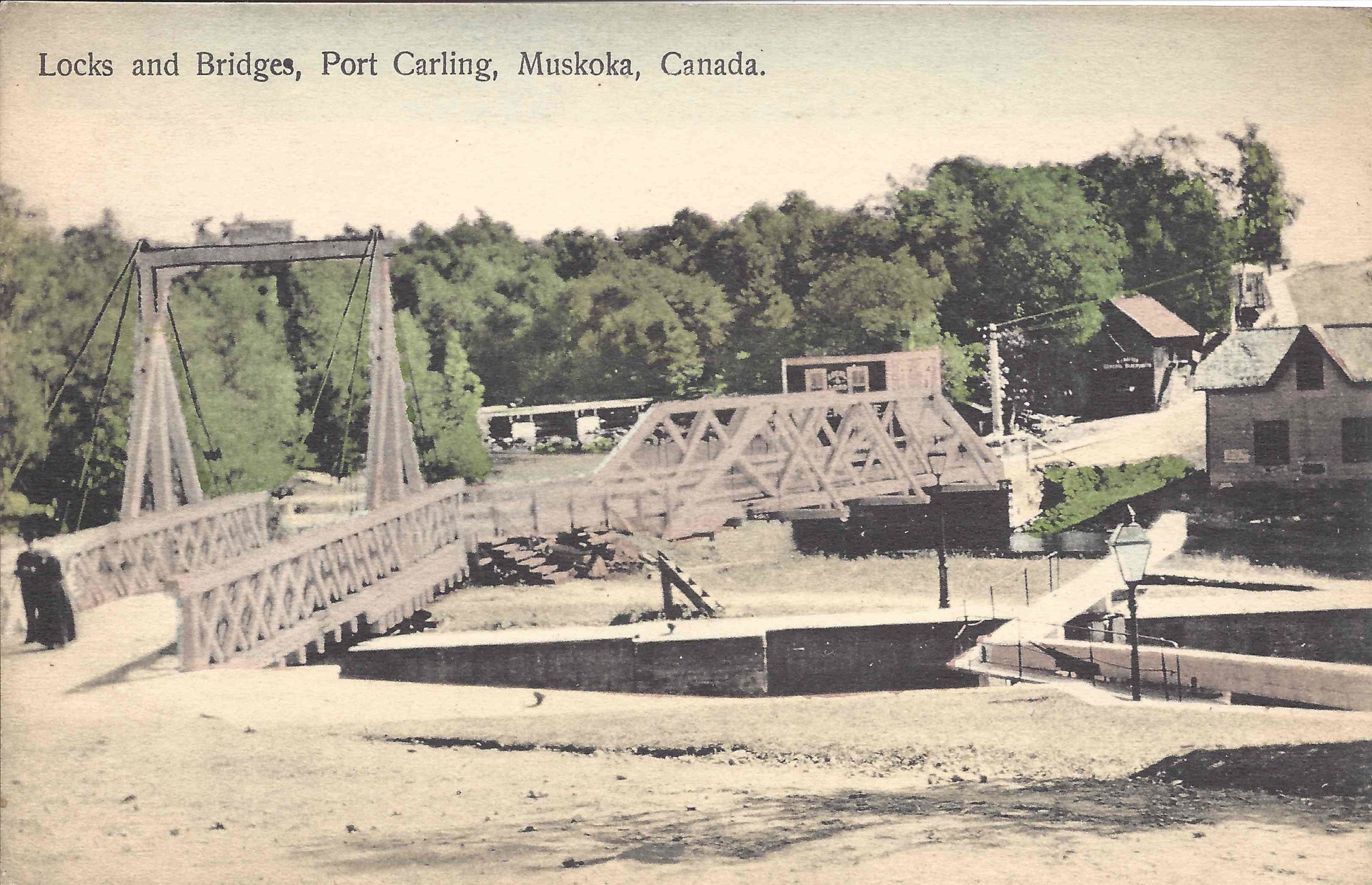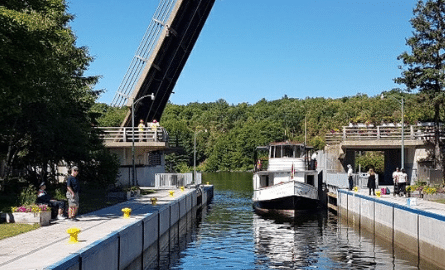Port Carling Bridge
This month’s exhibit is going through the various stages of the Port Carling locks and bridge. Though many people in Muskoka use the Port Carling locks and bridge without thinking, there is a rich history to how it was built and the transformations it went through. This is just a sneak peak into how it got to the bridge everyone knows today!
First Swing Bridge
This is an image of the original bridge constructed over the locks. The first set of locks were built from 1869-1871, taking multiple years and many project managers to be constructed. The bridges were not built until 1874. Both the static and swing bridges were constructed out of wood. In this postcard, the swing bridge is the one in the foreground with a taller structure on top.

Baisong Rapids Dam
On this postcard is pictured the first instance of the permanent dam across the Baisong rapids, where the small locks are located today. Though it is not sure what year it was built in, it was constructed sometime after the original locks to help control flooding. It was not the first dam on the Baisong rapids however, as in 1871, before construction on the locks were finished, A.P. Cockburn decided to move the original steamer Wenonah to Lake Rosseau. To do this, he used a process known as warping, which involved hauling the boat up the rapids by constructing temporary dams which raised the water level, allowing the boat to defy physics and move upriver.

Second Swing Bridge
This is an image of the second Port Carling bridge. Though initially proposed in 1914, this bridge only replaced the original one in 1922 after the end of the World War I. It was functional for 51 years until it was replaced in 1973. Unlike the previous bridge, it was built out of steel and set at a higher elevation, requiring concrete supports underneath. The bridge had only one lane which led to horrific traffic jams in the 1960s.

Cantilever Bridge
This is an image of the current Port Carling bridge in action. As opposed to the previous iterations, it is a cantilever bridge, meaning it creates room for passing boats by moving vertically rather than horizontally like a swing bridge. This required more technical prowess. In fact, when it originally opened in 1975, the builders had a nasty surprise when all of the asphalt slid off as it began to open! Now, the bridge remains a feature of Port Carling, and has outlasted all of the previous iterations.
